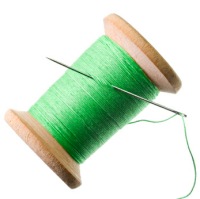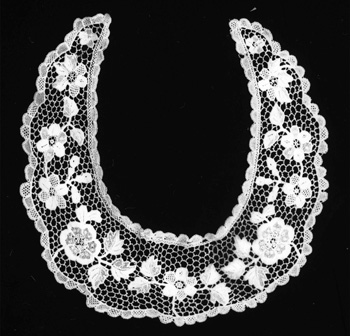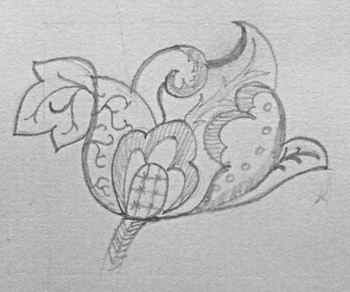- Home
- What do I need?
- Historical cost
The cost of hand embroidery supplies in 1930
Have you ever wondered what it cost to stitch a beautiful piece of embroidery back in the 1930s? I know I have! There's something so captivating about imagining the hands that held those needles, the fabrics they chose, and the stories woven into each stitch.
Recently, I stumbled upon a treasure trove – Helen Whiteford's school exercise book from the 1930s. Inside, nestled amongst her delicate embroidery samples, was a list of supplies and their prices. It's like a window into a bygone era, a glimpse into the world of a needleworker almost a century ago.

Now, before we dive into Helen's list, let's talk money. Back then, we used pounds, shillings, and pence – a whole different system than the decimal currency we use today.
Think of it like a puzzle, with pounds (£), shillings (s. or /-), and pence (d) all playing their part.
A pound was a hefty sum, made up of 20 shillings, and each shilling held 12 pence. A penny consisted of two halfpennies or four farthings.
So, let's take a peek at Helen's list, shall we?
| Tools and equipment | Cost |
| Pins | 2/10 a pound weight (almost 15 pence) |
| Needles | 4 to a 1/- packet (5 pence) |
| Thimbles - plastic | 1d |
| Thimbles - plated | 3d |
| Tape measures | 6d (about 2.5 pence) |
| Scissors - embroidery | 4/- or 6/- (20 or 30 pence) |
| Scissors - cutting out | 10/- (50 new pence) |
| Frame, round | 3/-, 4/- (15 or 20 pence) |
| Frame, square 20" | 13/4 (about 68 pence) |
| Pattern making paper, ruled 1/4" | 5/4 (about 28 pence) |
| Tracing paper | 5d a sheet (about 2.5 pence) |
| Indian ink | 1/4 for 1oz bottle |
| Fabrics | |
| Hessian 50" | 5/- to 6/- a yard (25-30 pence a yard) |
| Oatmeal cloth 50" | 8/6 (42.5 pence a yard) |
| Cotton crash | 4/- (20 pence a yard) |
| Hardanger | 6/- to 14/- (30 - 70 pence a yard) |
| Linen 36 to 72", white | 7/6 to 17/6 (35 - 87 pence) |
| Linen, dyed 36" | 10/6 (52.5 pence) |
| Unbleached calico, 36" | 4/6 (22.5 pence) |
| Canvas(various) | 3/- to 7/- (15 - 35 pence) |
| Gingham | 3/2 (16 pence) |
| Felt | 14/6 (72.5 pence) |
| Net | 6/- (30 pence) |
| Threads | |
| Clarks cotton, stranded | 4.5d a skein |
| Soft embroidery cotton | 4.5d a skein |
| Cotton a broder | 3d a skein |
| Embroidery wool, 4 ply | 3d a skein |
| Sewing cotton | 6d a reel |
| Tacking cotton | 2/2 a spool |
| Tape 36 yards | 1/5 |
| Bias binding | 1/5 |
| Coloured cord | from 2.5d a yard |
| Wooden beads 1/4 sq | 1/- each |
Now, imagine trying to buy all these supplies on a weekly wage of 30 shillings (about £1.50)! It makes you realise how precious each item must have been.
It's a reminder that embroidery wasn't just a hobby back then; it was a labour of love, a way to create beauty and meaning with limited resources.
Every stitch embodies dedication. Isn't that why hand embroidery is still special today? It connects us to the past, celebrates creativity, and demonstrates the enduring skill of human hands.
What did you think of this page?
Did it give you all you needed or did anything else spring to mind? If there was something missing give me a shout – or let me know if this page proved helpful (do let me know which page you are commenting on).
Would you like a direct reply? Just pop your email address below, and I'll be in touch.
Stay connected between projects
If you’d like occasional updates from my embroidery room, including new patterns, gentle tips, and little things I think you might enjoy, you’re warmly invited to join the Stitchin’ Times newsletter.
No pressure. Just a friendly note now and then to keep you inspired.




